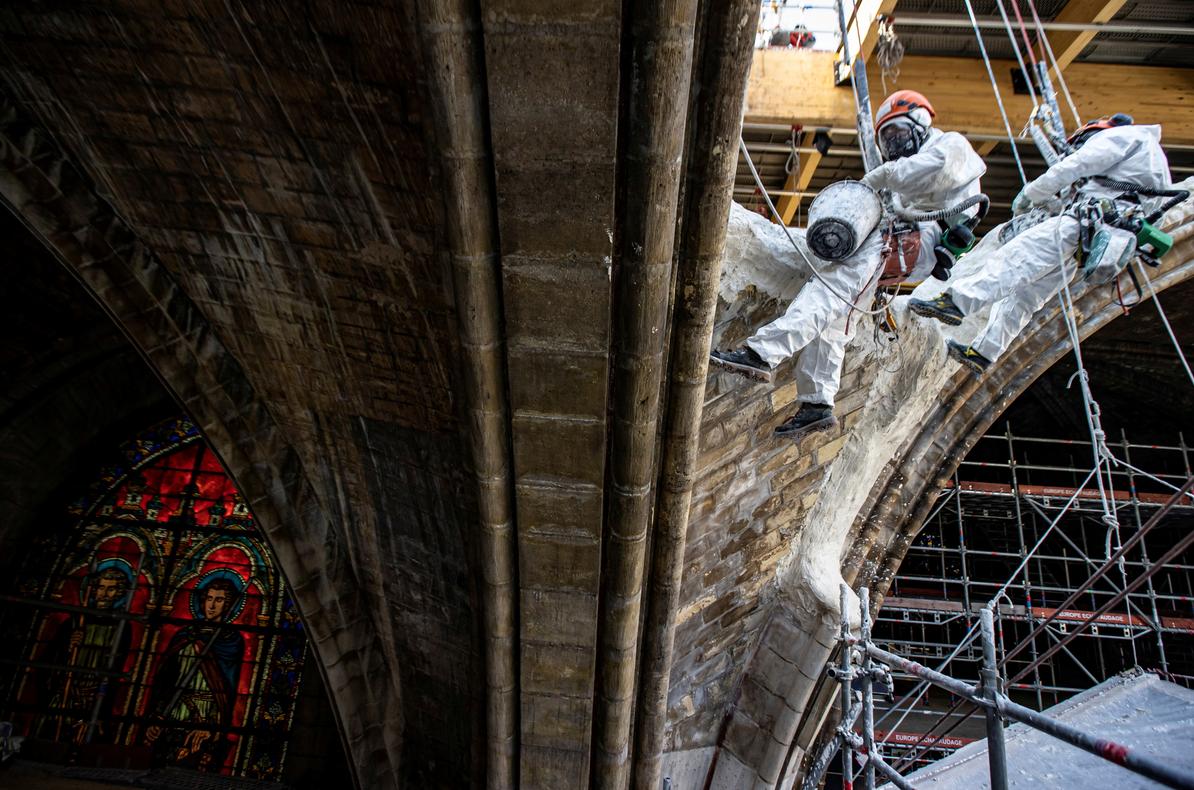Two years after a fire ravaged the Notre-Dame Cathedral in Paris, its restoration will allow the building to be in better condition than it was before, says Didier Rykner.
Didier Rykner is a French journalist and art historian. Committed to the defense of heritage, he regularly publishes his investigations and analyses on the website La Tribune de l’art.
On April 15, 2019, the cathedral of Notre-Dame de Paris was in flames. At the time, we had repeatedly denounced the way in which the State, and in particular the Ministry of Culture, bore a crushing responsibility in this tragedy, by the lack of maintenance and restoration of the building, by the inadequacy of the fire alarm system, and more broadly by the lack of means of the firemen at the beginning of the disaster. We also expressed our concern about the future restoration and the choices that would be made.
Two years later, if some of these questions remain unanswered, we must admit that the way the construction site is managed is rather reassuring. In spite of the delays caused by the lead affair and the pandemic, the cathedral has been secured according to the rules of art. The scaffolding, which miraculously (and probably also because it was extremely well designed) did not collapse, could be removed and no longer threatens the choir and the transept. The consolidation of the structures and the vault will soon be completed thanks to the installation of new scaffolding inside the cathedral, which will soon allow the restoration of the vaults to begin, followed by the reconstruction of the roof structure and the spire.
The concern we had about the restoration choices is no longer valid. The vast protest movement that arose at the idea of building a spire “bearing the mark of our times”, in the words of Prime Minister Edouard Philippe, has had the better of this crazy idea. We are certain, from now on, to see again in a few years the familiar silhouette of the architecture of Viollet-le-Duc as it was validated in the national commission of the heritage and the architecture, a choice which we already know that it is endorsed by the ministry of the Culture.
The restoration of the spire and the roof will be accompanied by a complete restoration of the exterior and interior of the cathedral.
The absurd polemics that were beginning to arise about the use of lead for the roof and oak for the frame seem to have died down. Whether we like it or not, lead remains a necessary material for the restoration of many historical monuments, and particularly in Paris where a large part of the building roofs are made of this metal. The dangers of lead are known and can be controlled, especially since such a fire is not – at least we hope – likely to happen again. Oaks are a renewable resource and a well-managed forest has always allowed them to be used in the construction of frames.
If Notre-Dame will not be “rebuilt” but restored, and not “more beautiful” than it was before, contrary to what the President of the Republic imagined, it will undoubtedly be in much better condition, for all the parts that were not affected by the fire, than it had been for a long time. The restoration of the spire and the roof will be accompanied by a complete restoration of the exterior and interior of the cathedral. Two chapels have already undergone a complete restoration in preparation for the rest of the building. The works of art that it contained, and in particular the Mays, those large paintings donated in the 17th century by the guild of goldsmiths, will also be restored and, one can hope, better displayed.
It is not excluded that the objective of being able to enter the cathedral again, while work continues on the top, will be met.
Nevertheless, there are still some fears, which are not minor. The first is that which concerns the development of the square, which we know that the City of Paris has seized and wants to spend a lot of money on (the 50 million it wanted to give to the restoration of the cathedral). Anyone who knows Anne Hidalgo’s propensity to massacre Parisian streets and squares – a policy currently abundantly denounced on Twitter by the hash word “Saccage Paris” – can be worried by such an idea.
The second concerns the future of the Hôtel-Dieu. It is true that this building, which is surprisingly not classified as a historical monument, does not seem to be really threatened in its architecture (it will nevertheless be necessary to remain vigilant on this subject). But its future use, including a part of shops and restaurants, should make room for a museum of Notre-Dame which will be sorely missed by the cathedral.
Emmanuel Macron absolutely wanted the restoration to be completed by 2024, which was obviously impossible as everyone had noticed. It is not excluded, however, that the goal of being able to enter the cathedral again, while the work continues at the top, will be met. Let’s not spoil this happy ending by abandoning the square and the Hôtel-Dieu to their fate.
